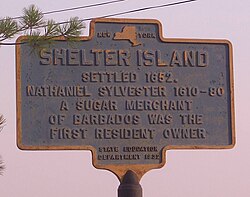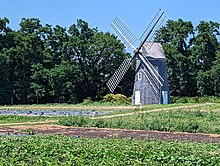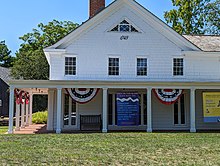
North Hempstead is one of three towns in Nassau County, on Long Island, in New York, United States. The population was 237,639 at the time of the 2020 census. It is the 7th largest city or town in New York by population.

Plandome Manor is a village in Nassau County, on the North Shore of Long Island, in New York, United States. The majority of the village is considered part of the Greater Manhasset area, which is anchored by Manhasset. The easternmost part of the village is more closely associated with Port Washington. The population was 793 at the time of the 2020 census.

Great River is a suburban hamlet and CDP in the Town of Islip in Suffolk County, New York, United States. It is situated approximately 50 miles (80 km) east of New York City on the South Shore of Long Island, adjoining the Great South Bay, protected from the Atlantic Ocean by Fire Island.

Miller Place is a hamlet and census-designated place (CDP) in the Town of Brookhaven, Suffolk County, New York, United States. Despite preserving much of its historic identity, changes in the 20th century have transitioned the hamlet into a desirable and densely populated suburban area. The population was 11,723 at the 2020 census.
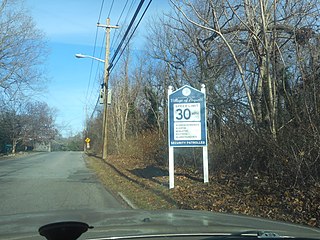
Poquott is a village in Suffolk County, New York, United States. The population was 953 at the 2010 census. The village is located in the Town of Brookhaven, on the North Shore of Long Island, and is officially known as the Incorporated Village of Poquott.
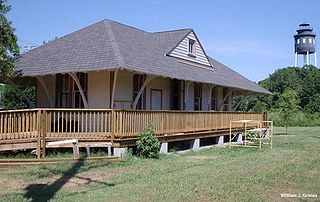
Cape Charles is a town / municipal corporation in Northampton County, Virginia, United States. The population was 1,009 as of the 2010 Census.

Bar Harbor is a resort town on Mount Desert Island in Hancock County, Maine, United States. As of the 2020 census, its population is 5,089. The town is home to the College of the Atlantic, Jackson Laboratory, and MDI Biological Laboratory. During the summer and fall seasons, it is a popular tourist destination.

Islip is a town in Suffolk County, New York, United States, on the South Shore of Long Island. The population was 335,543 at the 2010 census, making it the fourth most populous city or town in the New York metropolitan area.

The Town of Southold is one of ten towns in Suffolk County, New York, United States. It is located in the northeastern tip of the county, on the North Fork of Long Island. The population was 23,732 at the 2020 census. The town also contains a hamlet named Southold, which was settled in 1640.

Oyster Bay is a hamlet and census-designated place (CDP) within the town of Oyster Bay on the North Shore of Long Island in Nassau County in the state of New York, United States. The hamlet is also the site of a station on the Oyster Bay Branch of the Long Island Rail Road and the eastern termination point of that branch of the railroad.

Islip is a hamlet and census-designated place (CDP) that lies within the town of the same name in Suffolk County, New York. Located on the south shore of Long Island, the CDP had a population of 18,869 at the time of the 2010 census, a decline of 8% from the 2000 census.

The Town of East Hampton is located in southeastern Suffolk County, New York, at the eastern end of the South Shore of Long Island. It is the easternmost town in the state of New York. At the time of the 2020 United States census, it had a total population of 28,385.
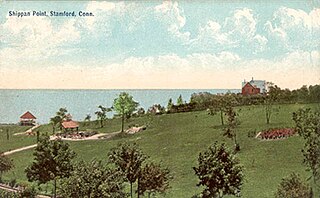
Shippan Point is the southernmost neighborhood in Stamford, Connecticut, United States, located on a peninsula in Long Island Sound. Street names such as Ocean Drive West and Lighthouse Way reflect the neighborhood's shoreline location. It is one of the wealthiest neighborhoods in the city, with about 1100 homes.

The North Shore of Long Island is the area along the northern coast of New York's Long Island bordering Long Island Sound. Known for its extreme wealth and lavish estates, the North Shore exploded into affluence at the turn of the 20th century, earning it the nickname the Gold Coast. Historically, this term refers to the affluent coastline neighborhoods of the towns of North Hempstead and Oyster Bay in Nassau County and Huntington in Suffolk County. Some definitions may also include the parts of Smithtown that face the Sound. The region is also largely coextensive with the Gold Coast region of Long Island, though this region excludes Smithtown, as the easternmost Gold Coast mansion is the Geissler Estate, located just west of Indian Hills Country Club in the Fort Salonga section of Huntington.

Robins Island is a 435-acre (1.76 km2) island in Peconic Bay by the eastern end of Long Island off the coast of New Suffolk, New York. The island is privately owned and not accessible to the public and is within the jurisdiction of the Town of Southold in Suffolk County, New York in the United States.

Manor St. George or St. George's Manor was a large tract of land purchased by William "Tangier" Smith in the 17th century on Long Island, in central Suffolk County, New York. Parts of the original parcel, which was approximately 64,000 acres (260 km2) of land, are preserved in bits and pieces: 127 acres (0.51 km2) and the main house and buildings are called the Manor of St. George and located in Shirley; 35 acres (0.14 km2) and another house are called the Longwood Estate and located in Ridge; and 35 acres (0.14 km2) became part of the William Floyd Estate.

The Theodore Roosevelt Council, 386 is a local council of the Boy Scouts of America. It is one of the nation's oldest, having been home to its namesake, the former US president, who was a founding member of BSA.
Matthias Nicoll, a.k.a. Nicolls, was the sixth mayor of New York City from 1672 to 1673. He is the patriarch of the Nicoll family, which settled and owned much of Long Island, New York. Numerous place names on the island now bear the Nicoll name.

Davenport Neck is a peninsula in New Rochelle, New York, extending southwesterly from the mainland into Long Island Sound, and running parallel to the main shore. It divides the city's waterfront into two, with New Rochelle Harbor to the south and southwest, and Echo Bay, to the north and northeast. Glen Island and Neptune Island lie just to the west of the Neck, and Davids and Huckleberry islands lie to the south.
22 "Shelter Islanders Find 'Dain Curse’ Filming Both Profitable and Fun" New York Times (November 6, 1977) NYTimes.com
